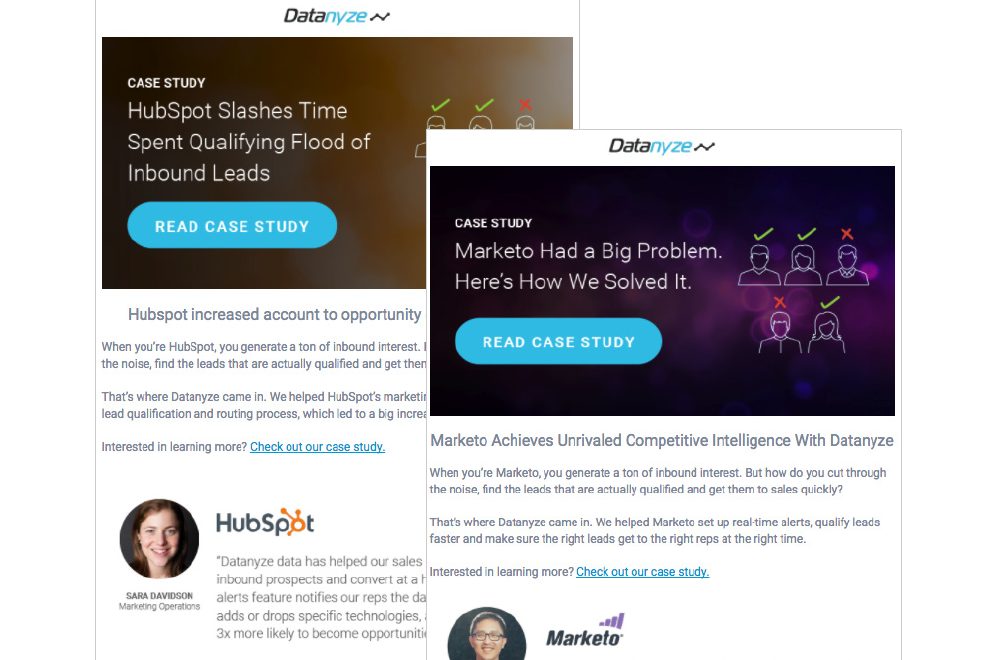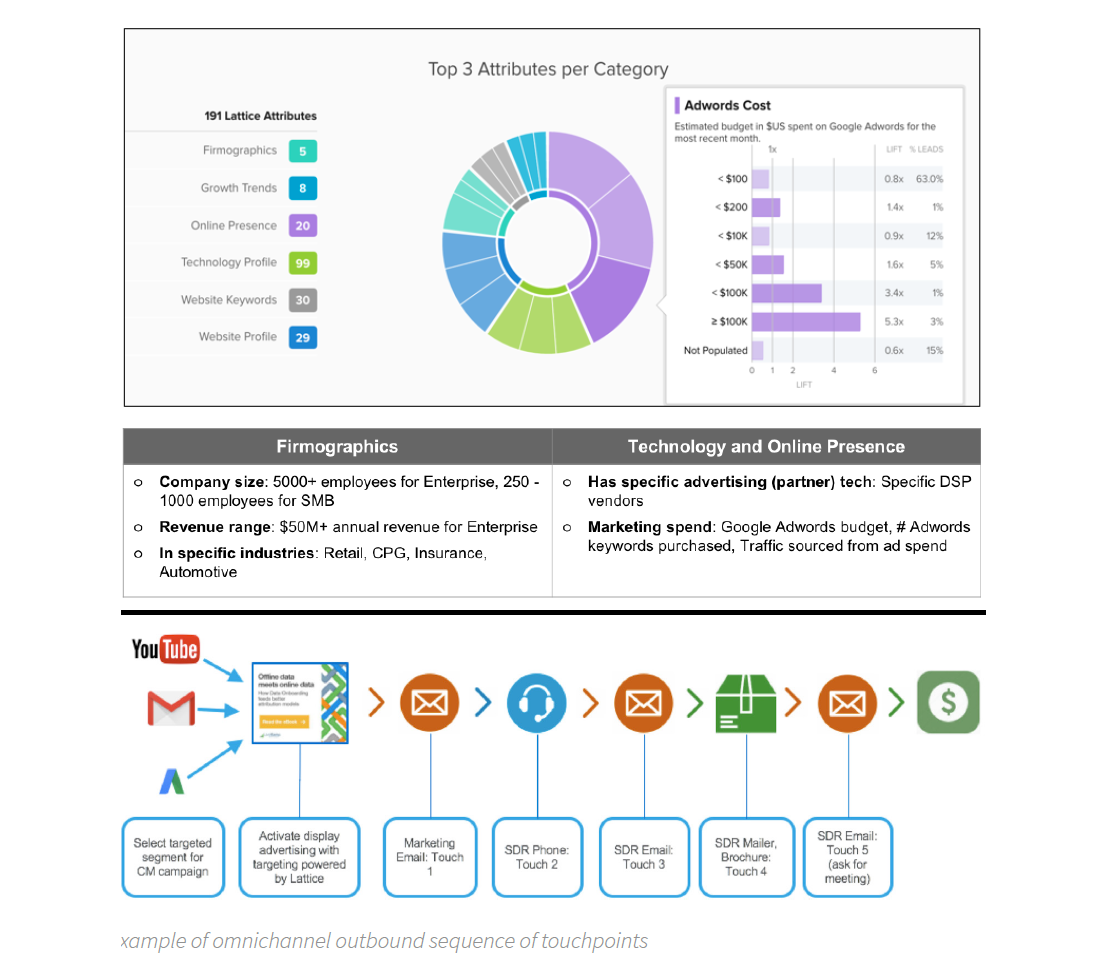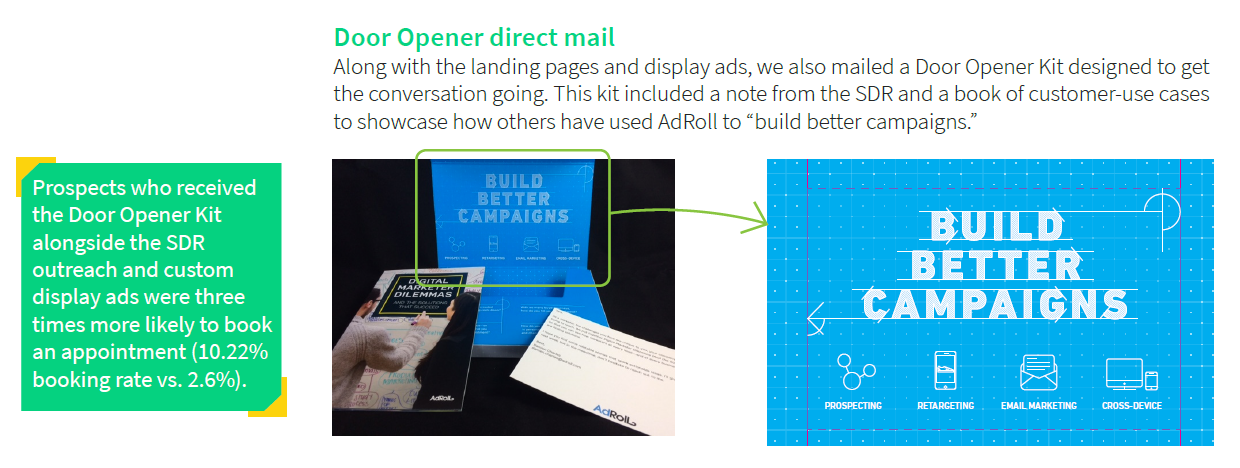According to ITSMA, a whopping 87% of marketers who use account-based marketing (ABM) campaigns say that its ROI outperforms other marketing investments. Further, a SiriusDecisions study discovered that 92% of globally surveyed B2B marketers considered ABM to be either “extremely” or “very” important to their marketing efforts. This is largely because ABM campaigns center around a strategic go-to-market approach that emphasizes coordination of personalized marketing and sales to increase engagement with specific accounts.
Kapost recently partnered with Engagio to produce and release “The B2B Marketer’s Guide to ABM Content.” We created this guide to provide B2B marketers with a valuable resource to guide their account-based marketing efforts.
Our goal at Kapost is to give marketers actionable insights so they can make strong, well-informed strategic decisions.
For this reason, we have put together some of the best examples of ABM in the industry for 2019. This article will showcase six companies who have done amazing things with B2B ABM content and include key takeaways so marketers can actionably apply these learnings to their work.
1. LiveRamp
When identity resolution provider LiveRamp decided to use an ABM to engage prospective customers, they took a multichannel approach, which allowed them to book several meetings with Fortune 500 companies.
LiveRamp credited their success to four main initiatives:
- Strong alignment between their marketing and SDR teams
- Their high value, regional thought leadership events that emphasize learning and development
- Cohesive engagement and messaging via personalized display advertising, marketing email promotions, multi-touch SDR strategies, and direct mail
- Automation
The company used a hyper-focused approach to target list creation and used this strategy to come up with 15 high-value clients. As a result, they achieved a 33% conversion rate from cold leads to meetings within just a four-week timeframe. They also found that their ABM campaigns performed significantly better than their broad campaigns and generated a 2x increase in previously dormant accounts as well as a 10x increase in year-on-year revenue. Furthermore, they discovered that their ABM efforts generated a 25x increase in customer LTV over a two-year period.
The key takeaway here is that it takes the integration of multiple initiatives to create a successful ABM campaign. LiveRamp’s hyper-targeted approach coupled with the strong coordination between their teams as well as their high-value offerings that sought to educate and inform their prospects integrated seamlessly, resulting in success.
2. Robin
Robin, a company which sells conference room scheduling software and tools, decided to think out of the box when they implemented their most successful ABM campaign to date. The company relies on technology sales to fuel business; however, they instead decided to focus on curating images of beautiful office spaces from established clients and targeting them to audiences on various social media platforms.
“People might not want to look for the tech, but they love offices. They love the bars, they love the chairs, the love the lighting, it’s kind of why Pinterest and Instagram exist,” said Ryan MacInnis, Director of Marketing at Robin.
With this creative approach, the company was able to increase website traffic by an astounding 50% and their leads by 20% just by showing prospects how great their future spaces could look.
This example demonstrates the value of out-of-the-box thinking and how brainstorming creative ways to connect with your targets can help you stand out in a sea of competition.
3. RollWorks
When RollWorks wanted to make a big impression on prospective customers, they took a multichannel approach and integrated ABM into their existing initiatives.
The company leveraged coordination between the marketing and SDR teams to come up with display ads, landing pages, and the perfect direct mail piece. They then used ABM to stretch their marketing reach farther through the sales funnel to keep the momentum going after making initial appointments.
They identified prospects who had not progressed for 35 days and then mailed them an “Over-the-Line” kit, which included a notebook with a checklist detailing the final steps they needed to take to get started on their first ad campaign. The notebook also contained customer testimonials on every few pages. RollWorks also implemented lower-funnel display ads, which educated those customers on the various benefits of adopting their full product suite.
With the help of the “Door Opener” kits, the team increased its appointment rate from just 2.6% to 10.2%. Prospects who received the company’s kit were also 3x more likely to book an appointment with the company. Furthermore, the team achieved an astounding 41% closing rate as well as increased social media brand awareness due to the prospects sharing photos of the direct mail pieces.
This is a perfect example demonstrating how ABM marketing can be effectively layered on top of existing initiatives. A common misconception about ABM is that it serves as a replacement for extant strategies. However, integration is the key to success, and despite what many may think, direct mail is far from dead.

4. Salsify
When software company Salsify was gearing up for a road-show event in New York City with companies such as Google and Johnson & Johnson speaking on their behalf, they decided to take a multi-channel approach to ABM. They reached out to their targeted list of accounts with a marketing message and followed up with display and targeted ads and emails. They then had their sales team swoop in to handle the rest. The results? In just two hours, the sales team closed dozens of accounts, and the company exceed conversion goals by a whopping 22%.
This goes to show that a strong focus coupled with a multi-channel approach and collaboration between sales and marketing departments is a vetted strategy for achieving above-and-beyond results.
5. GumGum
Media company GumGum took a creative approach to its ABM campaign and harnessed the power of social media to get the attention of fast-food giant McDonald’s. They designed 100 burger kits to showcase their brand and sent them to executives at both McDonald’s and the company’s media agencies. The kits included the names of each individual on a fast-food receipt that was wrapped up inside of the box.
GumGum also used McDonald’s key BigMac ingredients as a way to represent different aspects of the company’s technology. They then promoted the campaign on various social media channels with short videos and tagged key decision-makers. As a result, the company secured a meeting with the company’s key stakeholders.
This is a perfect example of how companies can use out-of-the-box thinking in conjunction with multiple touchpoints and social media to stand out from the crowd. The concept was eccentric, well-planned, and perfectly organized, which created the perfect recipe for success.

6. Datanyze
When Datanyze, a leading technographics provider, wanted to create an awareness campaign surrounding their Marketo and HubSpot integrations, they systematically targeted potential customers based on their current marketing automation use. The end-goal was to increase the company’s net-new opportunities.
Datanyze targeted marketers who worked for SaaS businesses using Marketo or HubSpot and segmented the accounts based on which platform the marketers used. They then sent each group a set of personalized emails specific to their technology stack. HubSpot users received messages about their HubSpot integration, and Marketo users received messages about their Marketo integration. Datanyze then sent both groups educational content on how they can use data integration within a marketing automation platform to improve key marketing metrics.
Through personalization and segmentation, the company achieved a positive ROI, closed several deals, and generated open rates that averaged 37% higher than their non-ABM emails.
This shows the importance of creating a hyper-focused, targeted account list. When companies understand the various factors that make a great customer and leverage this knowledge during their interactions, the results speak for themselves. Great data is the key to success.
Final Thoughts on ABM Campaigns
According to a CEB study, individual stakeholders who received personalized content they perceived to be tailored to their specific needs were 40% more willing to purchase from a company than stakeholders who did not.
If these statistics and examples teach us anything, it’s that when implemented correctly, a solid B2B ABM strategy can be a highly effective method for increasing not just leads and conversions, but also the overall satisfaction and lifetime value of your customers.
If you’ve been thinking about implementing account-based marketing and are looking for information on how to get started, feel free to download our useful guide to help you in your efforts to craft the perfect ABM strategy for your business.





